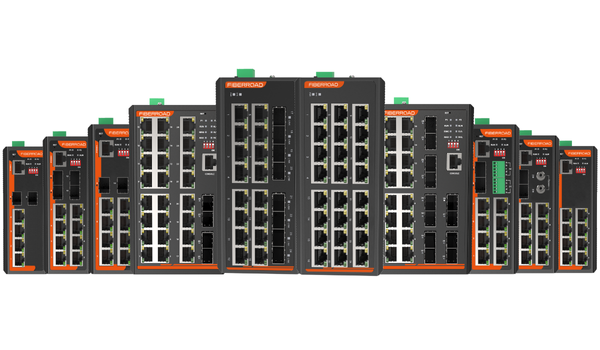Have you ever wondered what the difference is between a MAC address and an IP address? If so, then you’re not alone! These two types of addresses are essential components of networking protocols, but they serve very different purposes. In this blog post, we’ll take a closer look at the differences between MAC and IP addresses and explore why understanding these distinctions is crucial for anyone working with computer networks. So buckle up and get ready to dive into the world of network addressing!
What is MAC Address
A MAC (Media Access Control) address is a unique identifier assigned to network interfaces for communications on the physical network segment. MAC addresses are used as network addresses for most IEEE 802 network technologies, including Ethernet and Wi-Fi. Logically, MAC addresses are used in the media access control protocol sublayer of the OSI reference model.
IP (Internet Protocol) addresses are logical identifiers used by routing protocols to identify devices on a network. An IP address is composed of two parts: a network identifier and a host identifier. The network identifier specifies which network the device is attached to, while the host identifier identifies the specific device on that network.
What is an IP Address
An IP address is a unique numerical label assigned to each device connected to a computer network that uses the Internet Protocol for communication. An IPv4 address consists of four numbers separated by periods, each ranging from 0 to 255, such as 192.168.1.1. An IPv6 address is composed of eight groups of four hexadecimal digits separated by colons, such as 2001:0db8:85a3:0000:0000:8a2e:0370:7334.
The main difference between an IP address and a MAC address is that an IP address is used to identify a device on a network while a MAC address is used to uniquely identify a specific piece of hardware. A MAC address is hard-coded into the hardware of a device and cannot be changed, while an IP address can be assigned dynamically or statically and can change over time.

How They Work
MAC addresses are unique identifiers assigned to network interfaces. MAC addresses are used by the Media Access Control protocol at the data link layer of a network.
IP addresses are logical numerical addresses assigned to devices in a computer network. IP addresses identify devices on a network and allow them to communicate with each other.
The difference between MAC and IP Address
MAC and IP addresses are both unique identifiers assigned to devices connected to a network, but there are some key differences between the two.
A MAC (Media Access Control) address is a unique hardware address that identifies a device on a network. MAC addresses are usually assigned by the manufacturer of the network device, and they are stored in the device’s firmware. Every network device has a MAC address, which is typically written as a series of hexadecimal digits.
An IP (Internet Protocol) address is a unique numerical identifier assigned to each device connected to a computer network that uses the Internet Protocol for communication. IP addresses are typically assigned by your ISP (Internet Service Provider). You can think of an IP address as a street address for your device on the Internet. Just as you need a street address to have your mail delivered, devices on the Internet need an IP address to communicate with each other.
| MAC Address vs. IP Address |
|
|---|---|
| MAC ADDRESS | IP ADDRESS |
| LAYER 2 Address | Layer 3 Address |
| Identifies Network device on a local scale | Controls how devices on the internet communicate on a global scale |
| 12 digits, grouped into six pairs, separated by hyphoens Example: 00-00-00-00-00-00 |
For IPv4: 32 bits, grouped into four decimal numbers Example: 000.000.000.000.000 For IPv6: 128 bits, grouped into eight sets pf four digits Example: 2001:0db8:85a3:0000:0000:8a2e:0370:7334 |
| Can’t be changed | Can be changed at any time |
| Sometime called physical address | Sometimes called logical address |
| Hardcoded into the device at manufacturing | Assigned to device through software configurations |
Table 1: The differences between a MAC address and IP address
Why do you need both
If you’re wondering whether you need a MAC address or an IP address, the answer is: both! A MAC address is a unique identifier assigned to each network interface on a device. An IP address is a numeric identifier assigned to devices connected to a computer network.
MAC addresses are used for identification at the data link layer of the OSI model, while IP addresses are used for identification at the network layer. MAC addresses are hard-coded into network interface hardware, while IP addresses can be assigned dynamically.
Each device on a TCP/IP network must have a unique MAC address and IP address in order for data to be routed correctly. That’s why you need both!
How to find your MAC and IP Address
If you need to find your MAC or IP address, there are a few ways you can do this. On a Windows PC, you can open the Command Prompt and type in “ipconfig /all”. This will give you a list of all the network adapters on your computer and their corresponding MAC and IP addresses. On a Mac, you can open the Terminal and type in “ifconfig”. This will give you information about all the network interfaces on your computer, including the MAC and IP addresses. You can also find your MAC address by looking at the label on the back of your computer or router. The MAC address will be listed as a series of 12 hexadecimal digits, often separated by colons.
Conclusion
In conclusion, it is clear that MAC and IP addresses are two important components of a computer’s networking infrastructure. Understanding the differences between them can help you better configure your network for optimal performance, security, and efficiency. While both address types may seem complicated, with a little bit of research and practice understanding them will become second nature.






